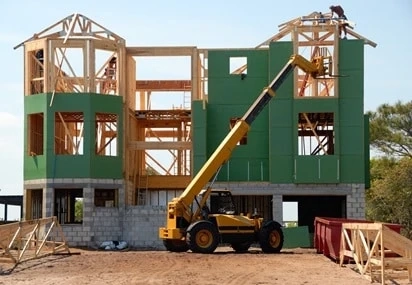A construction site is a location where building or civil engineering work is being carried out. This can include the construction of buildings, roads, bridges, or any other type of infrastructure. It is the location where workers, such as contractors, engineers, and labourers, carry out the various stages of construction, including excavation, foundation laying, framing, and finishing. These locations typically include temporary structures, such as scaffolding, and may also contain storage containers, construction equipment, and materials, which means that they will need to have high security policies for such things as key storage, with the use of a key cabinet or even filing cabinet suspension files, to ensure the safety of the premises from unauthorised personnel.
There are several types of people who may have access to construction sites which may put it at risk, including:
- Construction workers: This includes contractors, subcontractors, labourers, and tradespeople who are working there.
- Supervisors and managers: These individuals are responsible for overseeing the construction work and ensuring that it is being carried out safely and efficiently.
- Engineers and architects: These professionals are involved in the design and planning of the construction project and may visit the location to monitor progress.
- Suppliers and delivery personnel: These individuals may have access to the site to deliver materials, equipment, or supplies.
- Inspectors and regulatory authorities: These include building inspectors, safety inspectors, and environmental regulators who may visit there to ensure that the construction work is being carried out in accordance with relevant regulations and standards.
- Visitors and contractors: These include individuals such as real estate agents, potential buyers, or contractors working on related projects who may need to visit the site.
Due to the sheer number of people who have access to these open premises, construction sites can face a range of unique security issues, including:
- Theft of equipment and materials: They can be vulnerable to theft of high-value equipment and materials, such as power tools, building supplies, and even finished products like windows and doors.
- Trespass and vandalism: Unsecured locations can attract unwanted visitors, who may cause damage to the site or steal equipment.
- Health and safety hazards: They can pose health and safety hazards to workers and the public, including risks from heavy machinery, falling objects, and electrical hazards.
- Fire hazards: The presence of flammable materials, as well as electrical and welding equipment, can make these types of locations vulnerable to fire.
- Environmental hazards: They can have a significant impact on the environment, and may require specific measures to prevent soil and water contamination.
By controlling access to the site and ensuring that only authorized personnel are allowed to enter, construction sites can reduce the risk of theft, vandalism, and other security incidents. In addition, to address these security issues, such sites often implement security measures such as fencing, lighting, and 24-hour surveillance, as well as implementing strict health and safety protocols.
What are the common security measures that construction sites can take to prevent theft and other issues?
Construction sites can take a number of measures to prevent theft and other security issues, including:
- Physical security: Install security fencing, gates, and lighting to deter intruders and make it easier to detect unauthorized activity.
- Surveillance: Use security cameras and alarms to monitor the site and deter theft.
- Access control: Control access to the site through the use of security personnel, security badges, and visitor management systems.
- Employee training: Provide training to employees on security procedures, including locking up equipment and tools at the end of the day, and reporting any suspicious activity.
- Site security assessments: Regularly assess their security measures and identify any potential vulnerabilities, and take steps to address them.
- Insurance: Protect themselves against theft and other security incidents by carrying adequate insurance coverage.
- Health and safety measures: Implement strict health and safety protocols to minimize the risk of injury to workers and the public.
- Key management system: A key management system can be used to control access to the premises, with keys being issued to authorized personnel only. This system can also track the usage of each key, and provide an audit trail of who has entered there and when.
- Regular key audits: Regular key audits can be conducted to ensure that all keys are accounted for and that any lost or stolen keys are promptly reported.
- Secure storage: Keys to the location should be stored in a secure location, such as a locked cabinet or safe, to prevent unauthorized access.
By implementing these security measures, construction sites can reduce the risk of theft and other security incidents, and ensure the safety and security of workers, equipment, and materials.
Physical access control of keys can play an important role in increasing security on construction sites. By controlling who has access to the keys, they can limit the number of people who can enter the premises and reduce the risk of theft, vandalism, and other security incidents. Physical access control of keys can also provide a clear audit trail of who has visited the premises, making it easier to investigate any security incidents that occur.
In addition to controlling access to the site, physical access control of keys can also help to protect valuable equipment and materials from theft. By ensuring that keys are only issued to authorized personnel, they can limit the number of people who have access to the equipment and reduce the risk of theft.
In summary, physical access control of keys is an important aspect of security on construction sites, as it helps to prevent unauthorized access, protect valuable equipment and materials, and provide a clear audit trail of who has entered it.



